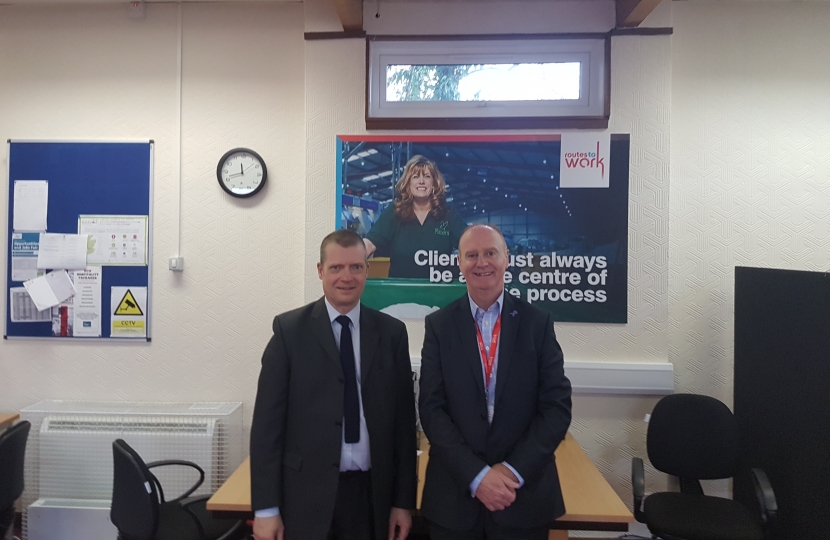
AN MSP has praised a local employability service which helps more than a thousand people back into work every year.
Graham Simpson visited Routes to Work to discuss the range of services they offer to help the long-term unemployed across North Lanarkshire back into the workplace under the banner of North Lanarkshire’s Working.
Routes to Work is a free confidential service helping unemployed residents in the area to access opportunities in education, training & employment. They provide advice, information, guidance & practical support to develop and enhance employment prospects. They promote their services to residents of community regeneration areas and to anyone facing other barriers to engaging with the labour market. Services are provided from a variety of outreach centres in the local community.
Graham Simpson said “Routes to Work engages with the most vulnerable members of society to improve their employability. Their community intermediary model ensures that they are out in the local communities – with 40 community venues utilised across North Lanarkshire each & every week.
“They have specialist workers within the team to create links with outside organisations. This ensures that the multiple factors behind an individual’s lack of employment are understood and targeted. The success of their work is highlighted by the 1,300 people they helped back into work last year. Their funding model ensures that they can work with clients for as long as it takes, to help clients navigate the new workplace and job application environment.
“With employment across the UK at record levels, this is the perfect opportunity for the Scottish Government and local councils to engage and direct services to improve the employability of Scots who have been out of the workplace for an extended period”.
Robin Turner, Chief Executive of Routes To Work, added “Our unique partnership with North Lanarkshire Council ensures that the Council’s ambition to improve economic opportunities & outcomes for those residents in greatest danger of being left behind by the economic recovery is directed and delivered in the communities where it is needed most and has the biggest social impact”.

